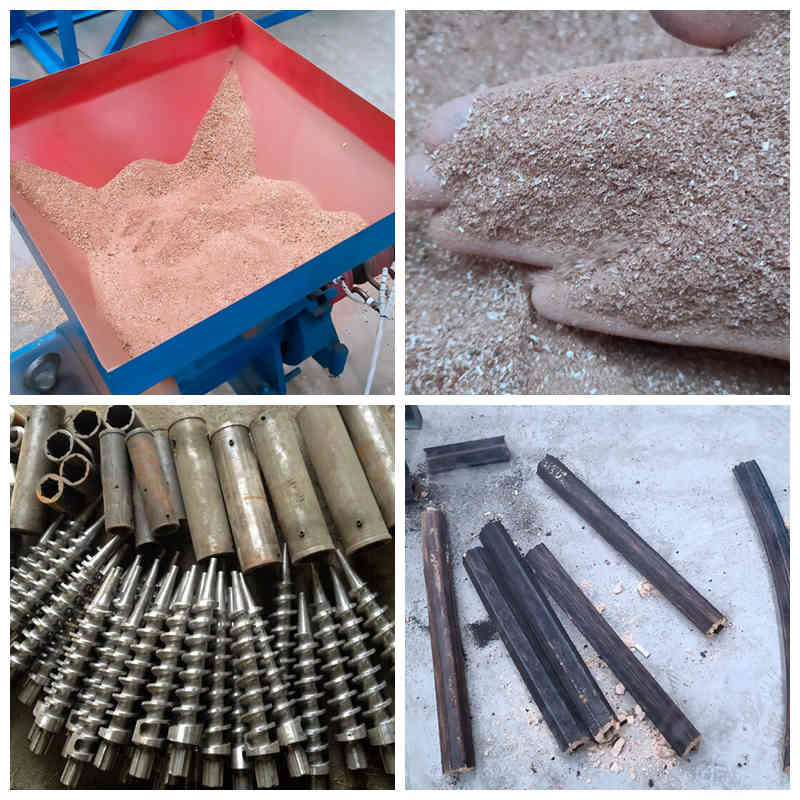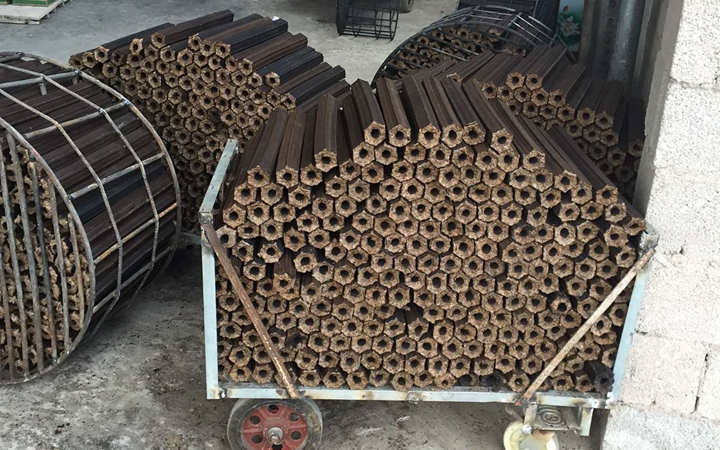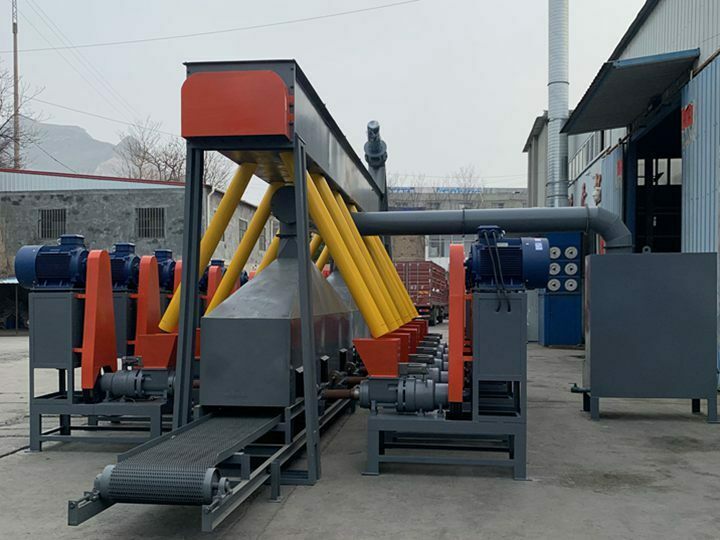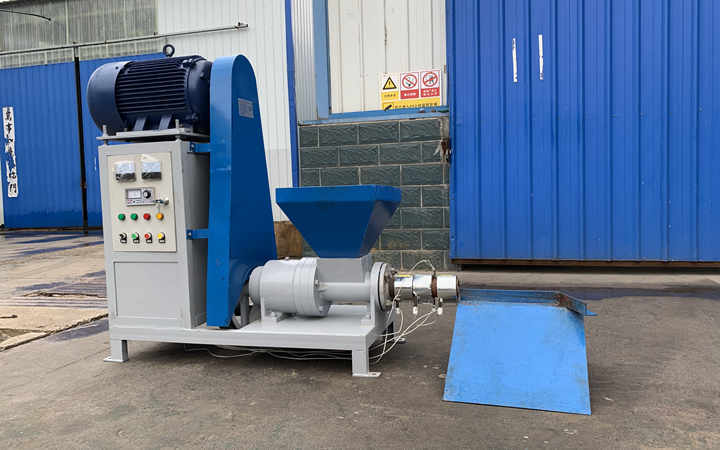Maschinengefertigte Holzkohle ist ein unverzichtbares Rohmaterial und Additiv in Branchen wie der Bodenverbesserung in der Landwirtschaft, der Krankheitsprävention in der Tierhaltung sowie in der "Heizung im Winter" und anderen Industrien. Sie ist auch ein unverzichtbarer Brennstoff für Branchen wie die Landwirtschaft und die Metallurgie. Daher ermutigen viele Länder, während sie das Fällen von Bäumen und das Verbrennen von Holzkohle verbieten, die Entwicklung einer neuen Generation von maschinengefertigter Holzkohle, um die natürliche Holzkohle zu ersetzen.
Die Entwicklungsperspektiven von Brikettkohle

Viele Länder in Südostasien sind große Holzkohleproduzenten, wobei die jährliche Holzkohleproduktion mehr als 10 Millionen Tonnen erreicht. Im Kontext des schrittweisen Rückgangs der traditionellen Holzkohleproduktion verwendet maschinell hergestellte Holzkohle landwirtschaftliche und forstwirtschaftliche Abfälle wie Reishülsen und Sägemehl als Rohstoffe. Im Vergleich zur natürlichen Waldholzkohle hat maschinell hergestellte Holzkohle große Vorteile und ihre Marktchancen verbessern sich zunehmend.
Der internationale Markt hat eine kontinuierliche Nachfrage nach maschinell hergestellter Holzkohle, und die derzeitige Produktionskapazität kann die Marktnachfrage nicht decken. Der Preis für maschinell hergestellte Holzkohle steigt weiterhin, und es gibt oft keinen verfügbaren Markt. Das Holzkohleprojekt des Investitionsmechanismus kann nicht nur gute wirtschaftliche Vorteile bringen, sondern auch gute soziale Vorteile schaffen. Es ist ein gutes Projekt, das dem Land und den Menschen zugutekommt.
Notwendigkeit des Projekts zur Konstruktion von maschinell hergestelltem Holzkohle

- Abfallverwertung: Jedes Jahr sammeln sich große Mengen an Ernteresten und anderen Rückständen an, von denen nur 20%-30% genutzt werden, während der Rest als Müll entsorgt wird. Es gibt auch Milliarden Tonnen von Ästen, Sägemehl, Reishülsen und verschiedenen Ernteresten. Wirf es weg, gemäß dem Verhältnis von 2,5-3,1, das aus maschinell hergestelltem Holzkohlenabfall erzeugt wird, werden Milliarden Tonnen neue Energie aus maschinell hergestellter Holzkohle produziert.
- Abfall in Schatz verwandeln: Die Briketts können Holzkohle ersetzen, was Holz spart, die Waldressourcen effektiv schützt, Bodenerosion verhindert und das ökologische Gleichgewicht anpasst.
- Ressourceregeneration: Holzkohle ist ein unverzichtbares Rohmaterial und Additiv in Chinas Industrie, Landwirtschaft, Tierhaltung, Metallurgie und anderen Branchen. Mit der raschen wirtschaftlichen Entwicklung verschiedener Länder der Welt kann maschinell hergestellte Holzkohle effektiv die Spannungen in der Holzkohlenversorgung lindern, was der gesunden und stabilen Entwicklung der nationalen Wirtschaft zugutekommt.
In welche Teile muss die Investition in maschinell hergestellte Holzkohle unterteilt werden?
Die Investition in die gesamte Ausstattung der Holzkohlemaschinen wird grob in die folgenden Teile unterteilt: Investition in die Ausrüstung + Investition in den Standort + Investition in Arbeitskräfte + Investition in Rohmaterialien + Investition in Energie.

- Standortinvestition: Um die normale Produktion der gesamten Mechanik-Kohlemaschinen sicherzustellen, benötigen wir mindestens etwa 100 Quadratmeter Platz. In der Regel besitzen oder mieten wir diesen selbst. Die Kosten hängen von unserer tatsächlichen Situation ab.
- Ausrüstungsinvestition: Die Investition in Ausrüstung sollte entsprechend dem Produktionsmaßstab bestimmt werden. Mit anderen Worten, sie wird entsprechend der Marktnachfrage nach Mechanismus-Kohle und den eigenen Investitionsmitteln festgelegt. Die Hersteller haben unterschiedliche Spezifikationen für die Ausrüstung, und die Produktion beträgt 1 Tonne pro Tag, 2 Tonnen und mehr als 3 Tonnen, dies basiert auf der fertigen Kohle.
- Rohstoffinvestition: Im Allgemeinen befinden sich die maschinell hergestellten Holzkohlenstandorte in ländlichen Gebieten. Lokale Strohhalme, Äste und andere Rohstoffe können aus der Umgebung gesammelt oder zu niedrigen Preisen gekauft werden. Der Standort sollte in einem Gebiet mit ausreichenden Rohstoffen platziert werden, was nicht nur die Kosten für die Rohstoffe der maschinell hergestellten Holzkohle senken kann, sondern auch die Transportkosten. Je nach den tatsächlichen lokalen Gegebenheiten gibt es auch unterschiedliche Unterschiede in der Höhe der Investitionen.
- Humanressourcen: Laut den Installationserfahrungen unserer Fabrik über viele Jahre sind 2 Personen erforderlich, um täglich eine Tonne fertigen Holzkohle zu produzieren, und 4 Personen sind notwendig, um die tatsächlichen Operationen für die Produktion von einer Tonne fertiger Holzkohle pro Tag durchzuführen.
- Strominvestition: Mit einer täglichen Produktion von einer Tonne fertigem maschinell hergestellten Holzkohle verbraucht unsere Maschine zur Herstellung von Holzkohle etwa 260 Grad Strom. Laut der lokalen Stromrechnung kann die erforderliche Kosten berechnet werden.

